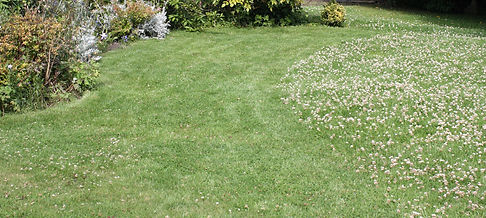Wildlife-friendly Lawns
This blog provides our top tips for how to make your lawn more wildlife-friendly while still using it as a lawn for BBQs, football, sunbathing, and family life. If you want to convert your lawn, or other parts of your garden, to a wildflower meadow instead then there are lots of good resources out there from groups like the Wildlife Trusts, Natural England and the Royal Horticultural Society. When you are creating a natural habitat such as a meadow, it is important to take your soil type into account and you can find out more about our local soil on our soil blog. To find out which non-lawn, meadow grass species will support the butterflies we see here in north Bristol, check out our butterfly blog.


Back to making your lawn more wildlife-friendly! Our first tip is to stop using weedkillers. This will instantly increase the biodiversity of your lawn. Plants that can handle being mown, or will thrive when they are mown, will establish without you having to do anything else. Over time you may see the diversity drop if one or two more thuggish species start to dominate. If you want to keep a wider variety of species, you can cull some of the dominant plants by lifting them with a fork. Just don't use a weedkiller. You can find out more about one particular dominant lawn plant, the dandelion, here [new blog to be added very soon!] but the short answer when it comes to how many dandelions you should have in your lawn is that it is down to your personal preference.




There are a few wildflowers that we have proactively planted in our lawn because they are particularly valuable to wildlife and are less likely to arrive spontaneously. Crocuses flower very early and are a valuable nectar resource for early emerging pollinators. They also look great. Choose an area that doesn't get too trampled and that you are happy to leave unmown in spring when the plants are in leaf (have green leaves). We planted ours under our apple tree. We also have a magnolia tree in our lawn where the grass only grows slowly because it is shaded and we can't walk because the magnolia branches come down too low. This means it was an ideal area to plant cowslips and violets, specifically sweet and dog violets. These native wildflowers are great for pollinators and, importantly, they are also food plants for caterpillars (the caterpillars won't decimate them).




Pesticides aren't often used on lawns but insecticides may sometimes be used to get rid of ants. If you stop any use of insecticides / ant killer you will benefit the invertebrates living in or under your lawn and that will, in turn, benefit your garden birds. Blackbirds and starlings regularly root out all sorts of bugs from our lawn and green woodpeckers feed on the ants.


The final step to make your lawn more wildlife-friendly is, of course, to mow less. Mowing less will give lawn plants a chance to flower and thus benefit their pollinators. Supporting the full life-cycle of grassland invertebrates requires a wildflower meadow approach (see the links above), growing non-lawn grass species, and reducing your mowing frequency even further.
To keep your lawn as a lawn while mowing less, there are a few options. As mentioned above, if you are growing bulbs such as crocuses, native fritillaries or snowdrops then you should avoid mowing these areas while the leaves of these plants are still green. Then the most famous approach to reduced mowing is 'No Mow May' promoted by Plantlife. You simply stop mowing altogether in the month of May and you can find out more about the rationale for this on the Plantlife webpage. Meanwhile, Butterfly Conservation recommend you leave at least a fifth of your lawn unmown from April to September. Their rationale is that many butterflies and moths need long grass all year round to complete their life cycles and you can read more on the Butterfly Conservation website. An alternative or complementary approach is meadowscaping, which involves mowing part of your lawn and leaving the rest unmown, ideally in a visually-pleasing shape. You can mow a wandering path through the lawn, or mow a curved area that is edged by unmown borders, or vice versa. Simply choose the design that works best for you and how you use your lawn.
Plants that thrive in lawns flower at different times from early spring to mid-summer. We have found the species that is most popular with pollinators in our lawn is white clover, which usually flowers in June in Bristol. As always though, a greater variety of plants and flowers will support the most wildlife. The approach that we have found works best for us is to mow half our lawn in June, in an arced shape, and let the clover flower in the other half of the lawn. After a few weeks, the clover flowers are finished in the unmown area and are just starting to open in the mown part of the lawn, so we then mow the area that was previously unmown. This approach is deadheading on a massive scale and removing (mowing) the finished clover flowers encourages the plant to produce more. We continue in this way, being guided by which plants are flowering-then-finishing at each point in time, until the lawn flowers have finished in summer. We also leave an area of our lawn (this area is no longer lawn really) unmown from April to September, and have left it for native grass species to colonise from neighbouring areas.




